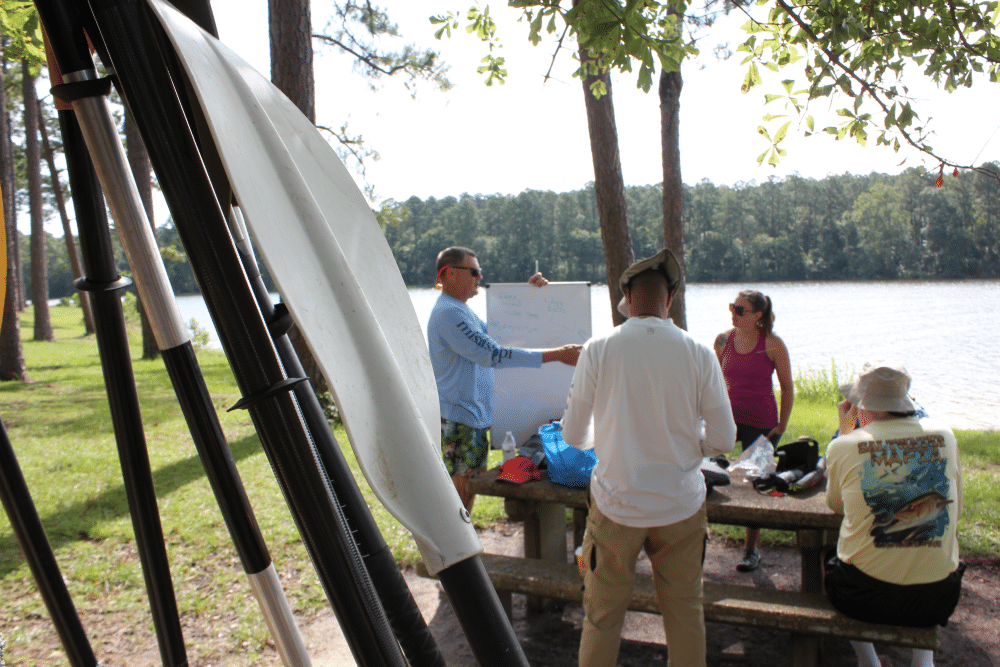Could you get back in your kayak if it tipped over in open water? How should you dress for a day spent out kayaking? Which kind of kayak should you purchase? These were a couple of the questions posed to the participants at the American Canoe Association (ACA) Introduction to Kayaking and Kayak Safety class on Saturday, July 10, 2021, at Flint Creek Water Park.
ACA Open Water Coastal Kayak Instructor (Level 4) Hank Baltar began the morning discussing the most important element of a safe day out on the water kayaking…the environment. He discussed the wind, the waves, the weather, and the water. He asked the participants how they planned their boat launch location. He went on to explain the importance of knowing the predicted winds for the day and the expected tides. Emphasizing planning your paddle route to compliment the elements. He recommended that when paddling in a new area, you should reach out to locals for help in understanding the natural elements of the area you are looking to paddle in.

Participants then reviewed the essential equipment in any paddling adventure. The kayak types and paddles, appropriate attire, and hydration were discussed. Then the most important piece of equipment for any boater…the PFD (personal flotation device). It is crucial that kayakers wear a PFD while paddling. According to Baltar, a good day kayaking can take a dark turn quickly if you are not wearing a life jacket. Suddenly and unexpectedly, being in the water is not the time to find and put on a PFD when your life may depend upon it. According to the Mississippi Department of Marine Resources, there are several types of PFD and some rules and regulations you should be aware of when boating; please visit their website for more information.
After reviewing the environment, equipment, safety, information about getting the kayaking in and out of the water, and basic kayak strokes (keys for making your kayak do what you want it to do), the participants moved into the last portion of the class. This is when the participants are asked a key question: Can you get back into your kayak if you tip over in open water?
According to Baltar, this is the most anticipated part of the day for students and the most entertaining part for observers. The part when each participant gets a chance to answer that question for themselves and do what kayakers try to avoid doing on most paddling trips…tip themselves over and out of their kayak. After watching the instructor demonstrate for the students and explain how to complete a self-rescue, each participant paddled 100 or so feet from shore with the instructor observing nearby, and then one at a time, each intentionally tipped themselves over into the water and practiced a reentry technique.
At the end of the training, everyone was a little wet and a lot more knowledgeable about paddling their kayaks. According to participant Samantha Bergeron, she enjoyed the opportunity to learn from such an experienced kayaker and looks forward to learning more as she spends her paddle time fly fishing from her kayak. Baltar conducts training regularly throughout the year for both an introduction class, like the one held Saturday, as well as more advanced classes geared toward open water rescues and advanced maneuvering techniques including rolling and paddling in rough water conditions. For more information on how you can attend a course or request a course of your own, reach out to Baltar by phone at (228)223-3164 or by email at kayakhank@gmail.com.